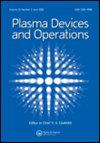Some recent Russian studies of hydrogen isotope retention in plasma facing materials
引用次数: 7
Abstract
Russian studies of hydrogen isotope retention in plasma facing materials of the International Thermo-nuclear Experimental Reactor included the analysis of carbon–deuterium flakes, formed in the vacuum chamber of the T-10 tokamak, as well as modelling of normal reactor operation conditions and plasma disruptions. The decrease in the [D]/[C] atomic ratio and the decrease in the mass of flakes when these flakes were annealed in air and water steam against temperature were determined. Using Fourier transform infrared reflection spectroscopy, we found that deuterium is accumulated in the flakes only in two states: in the C‒ D2 sp3 deformation modes at 633 and 1090 cm−1 and in the C‒ D2, 3 sp3 stretching modes at 2100–2200 cm−1. In co-deposited Be+D films the [D]/[Be] atomic ratio decreases from 0.15 at 375 K to 0.05 at 575 K. Carbon impurities in the Be+D films slightly increases deuterium retention. The effect of plasma disruptions on deuterium retention in tungsten is described.最近俄罗斯对等离子体表面材料中氢同位素保留的一些研究
俄罗斯对国际热核实验反应堆等离子体表面材料中氢同位素保留的研究包括对T-10托卡马克真空室中形成的碳-氘薄片的分析,以及对正常反应堆操作条件和等离子体中断进行建模。测定了薄片在空气和水蒸气中随温度退火时[D]/[C]原子比的减小和薄片质量的减小。利用傅里叶变换红外反射光谱,我们发现氘在薄片中只以两种状态积聚:在633和1090 cm−1的C - D2 sp3变形模式和在2100-2200 cm−1的C - D2, 3 sp3拉伸模式。在共沉积Be+D薄膜中,[D]/[Be]原子比从375 K时的0.15下降到575 K时的0.05。Be+D膜中的碳杂质略微增加了氘潴留。描述了等离子体破坏对钨中氘保留的影响。
本文章由计算机程序翻译,如有差异,请以英文原文为准。
求助全文
约1分钟内获得全文
求助全文

 求助内容:
求助内容: 应助结果提醒方式:
应助结果提醒方式:


